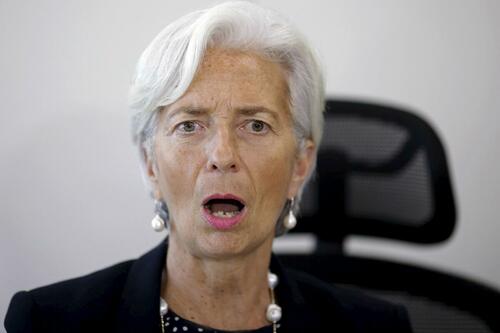Rabobank: Welcome To Europe’s New (Ab)normal
By Bas van Geffen, senior market strategist of Rabobank
It was a wild ride for Europe this week. Italian PM Draghi resigned, triggering snap elections in the country. These are scheduled for 25 September. The elections will delay talks on the 2023 budget and the implementation of structural reforms. Moreover, a new government may try to renegotiate the reform plans that have been submitted to Brussels for the Recovery and Resilience Facility – although there would appear to be little wiggle room here.
Notwithstanding this political uncertainty, the ECB raised its interest rates by 50 basis points, trying to normalise its interest rates in pursuit of the inflation aim. I’m glad that Lagarde specifically referred to normalising the Bank’s rates policy, rather than policy normalisation in general, because, as we have been arguing, the ECB’s tightening cycle is anything but normal. One would expect that a central bank can do away with unconventional policy as it moves away from the lower bound on interest rates. Look at the Fed, for example, which is already slowly unwinding its QE policy.
Yet, in Europe ‘normalisation’ means an expansion of its unconventional toolkit: alongside the rate hike, the ECB launched an anti-fragmentation instrument under the name Transmission Protection Instrument. Under the TPI the ECB could theoretically buy unlimited amounts of sovereign(-related) bonds, and much of the programme –from activation to purchase volumes– is left to the Council’s discretion. The Governing Council did reassure us that “the scale of TPI purchases would depend on the severity of the risks facing monetary policy transmission,” and Lagarde noted that the ECB “prefers not to use the instrument, but will not hesitate [to do so if needed]”.
That determination may well be tested, though. Markets were initially positively surprised by the unlimited size of the TPI. However, a long list of eligibility criteria relating to sound fiscal and economic policies caused some second-guessing, not in the least part because of the political uncertainty in Italy. The TPI’s conditions don’t sound overly restrictive to us, and there appears to be quite some grey area. However, the market may have to test this before it believes that as well.
Welcome to the new (ab)normal.
Of course, as we have flagged several times before, the ECB is in the uncomfortable situation that the TPI was a prerequisite for a faster, yet still orderly, hiking cycle. Lagarde also admitted this herself, stating that the tool allowed the ECB to “go big”. In addition to the availability of the TPI, Lagarde cited inflation risks, which “have intensified, particularly in the short term”. In other words, the ECB is clearly still concerned about the price developments. This means that the 50 basis points weren’t just a way to get the hawks on board with a less restricted fragmentation tool, and that more Council members may have genuinely wanted a bigger hike based on their assessment of the inflation outlook, although not all doves were convinced: a small number of ECB officials initially preferred a 25bp increase, according to Bloomberg.
After yet another last-minute deviation from its earlier guidance, the ECB has finally given up trying to predict its own next move. The Council dropped most of its forward guidance, including its intentions for September, and has shifted to a “meeting-by-meeting” approach instead. That, arguably, is at least some true normalisation of policy: an ECB that no longer pre-commits.
In light of the hawkish surprise yesterday, money markets are now pricing in a non-negligible chance that the ECB will follow up with a 75bp hike in September. We maintain our 50bp call for that meeting, but we now believe the ECB will follow that up with another 50bp in October.
There are two key assumptions behind this new forecast. First of all, this assumes that the TPI will effectively limit fragmentation risks in the Eurozone. Secondly, this assumes that the economic outlook does not deteriorate too sharply in the next couple of months. We still believe that the ECB’s next set of forecasts will probably require a downward revision of the growth forecasts, as the PMIs today (see below) are yet another indicator that Eurozone growth is losing momentum. That said, it also looks as though the Council’s tolerance towards growth risks has increased as long as inflation remains uncomfortably high. Without further shocks to energy and food commodities, we would assume that inflation will peak and slowly start to recede from early-Q4, which means that the ECB can probably declare job (almost) done after October. Plus, the ECB is so far not forecasting any recession, and the Bank has historically been reluctant to do so. It is therefore quite possible that it takes tangible evidence of one before the ECB stops hiking. We therefore do still believe that a 25bp move in December will be the end of the hiking cycle.
Despite the ECB -yet again- adopting a more hawkish stance, we remain sceptical that it will provide EUR with significant support. For a brief moment it looked like the ECB had struck the right balance with a 50bp hike and ‘unlimited’ TPI: EUR rose above 1.026 upon the release of the press statement. However, as we feared ahead of the meeting, this boost to the currency didn’t last very long.
Tyler Durden
Sun, 07/24/2022 – 07:00

